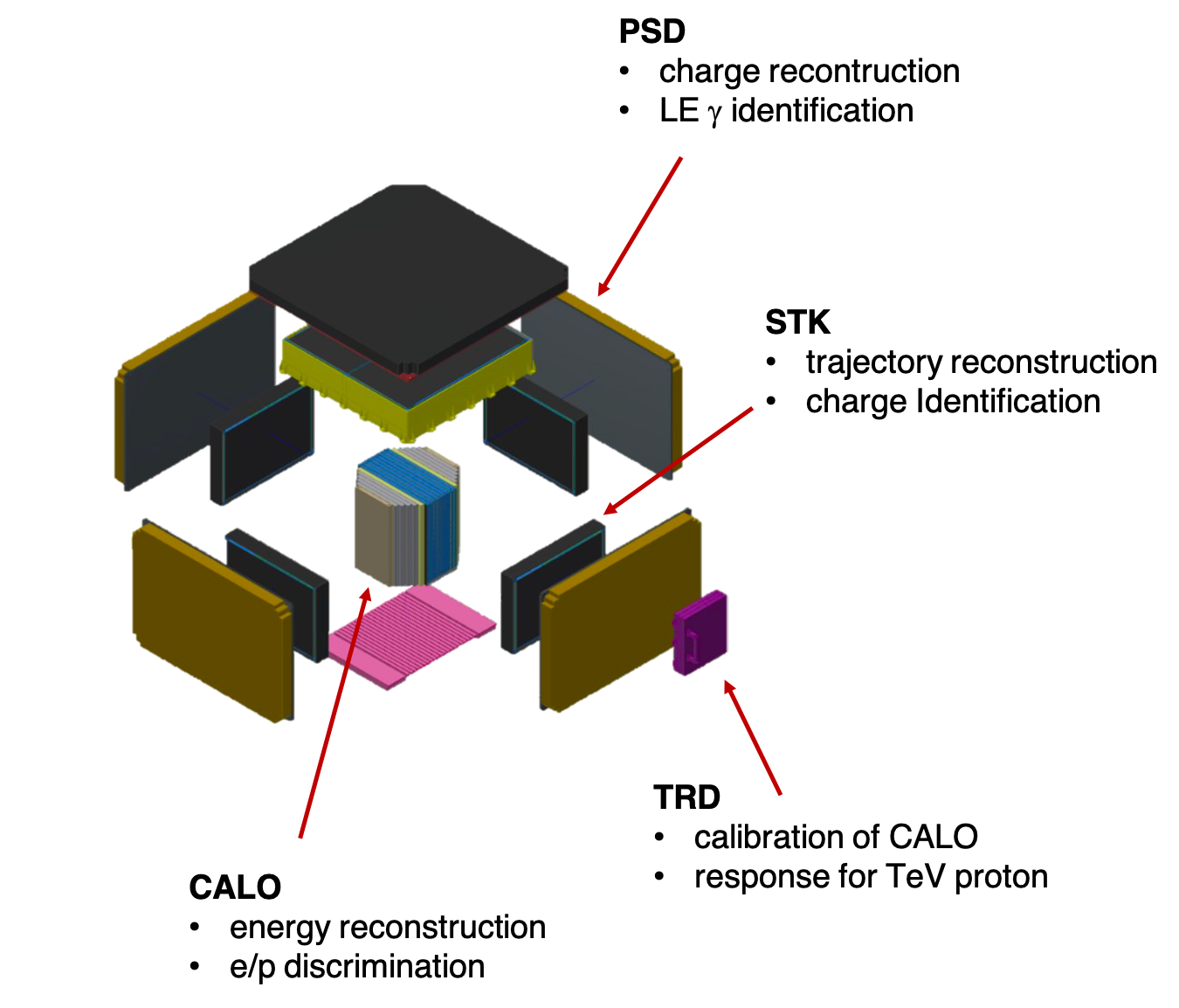The HERD experiment
HERD(High Energy Cosmic Radiation Detection) facility is one of the Cosmic Lighthouse Program onboard China’s Space Station, planned to be launched and assembled in 2020. The main science objectives of HERD onboard china’s space station are detecting dark matter particle, study of cosmic ray composition and high energy gamma-ray observations. The main constraints imposed on HERD are: total weight less than around 2 tons and total power consumption less than around 2 kilowatts.
HERD's objectives
(The primary objectives of HERD are etc...). To achieve HERD’s science objectives, HERD must have the capability of accurate electron and gamma-ray energy and direction measurement (tens of GeV – 10TeV), adequate cosmic ray energy measurement with charge determination (up to PeV). The baseline design includes two main parts to achieve HERD’s measurement objectives: the micro silicon strip tracker (STK) covering the top and fours sides of the instrument, for incident particle trajectory and nucleon charge measurement; the LYSO crystal calorimeter (CALO), for the incident gamma-ray, electron and cosmic ray nucleon energy measurement. (TRD? PSD?)
